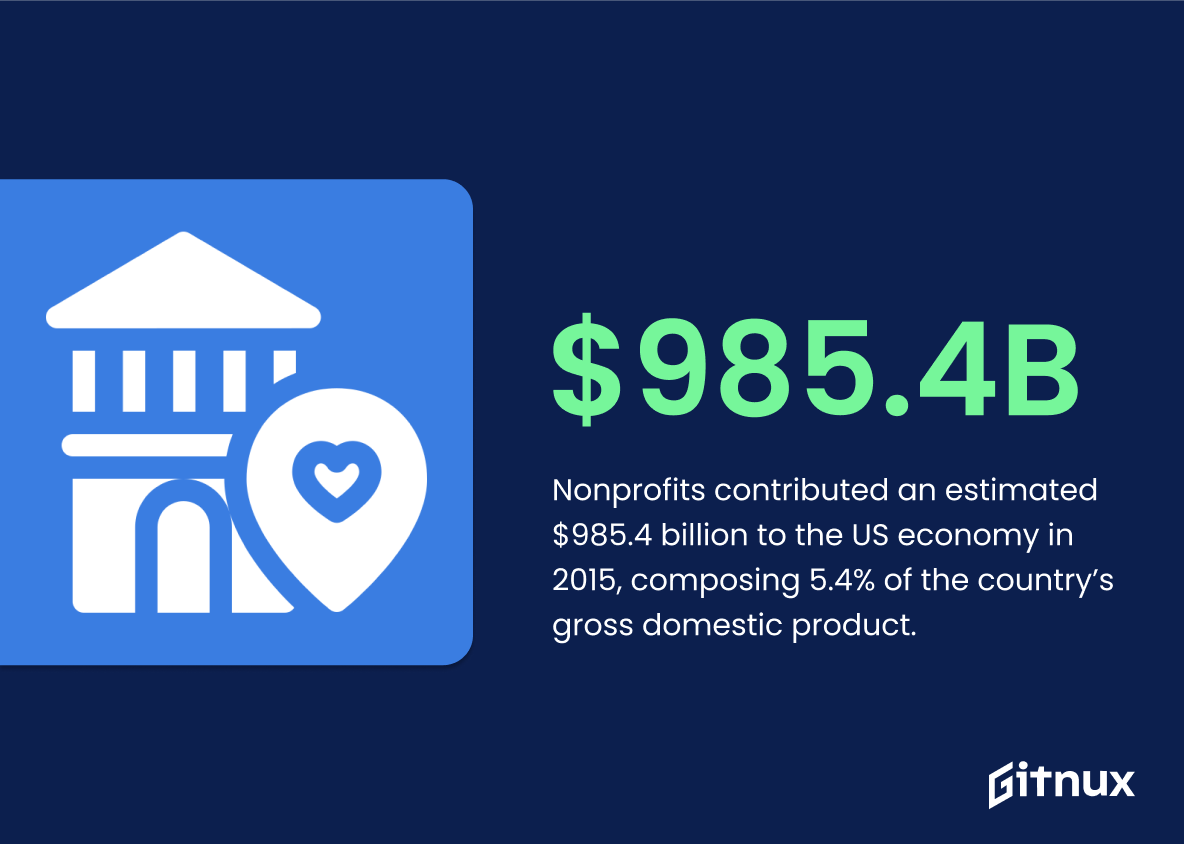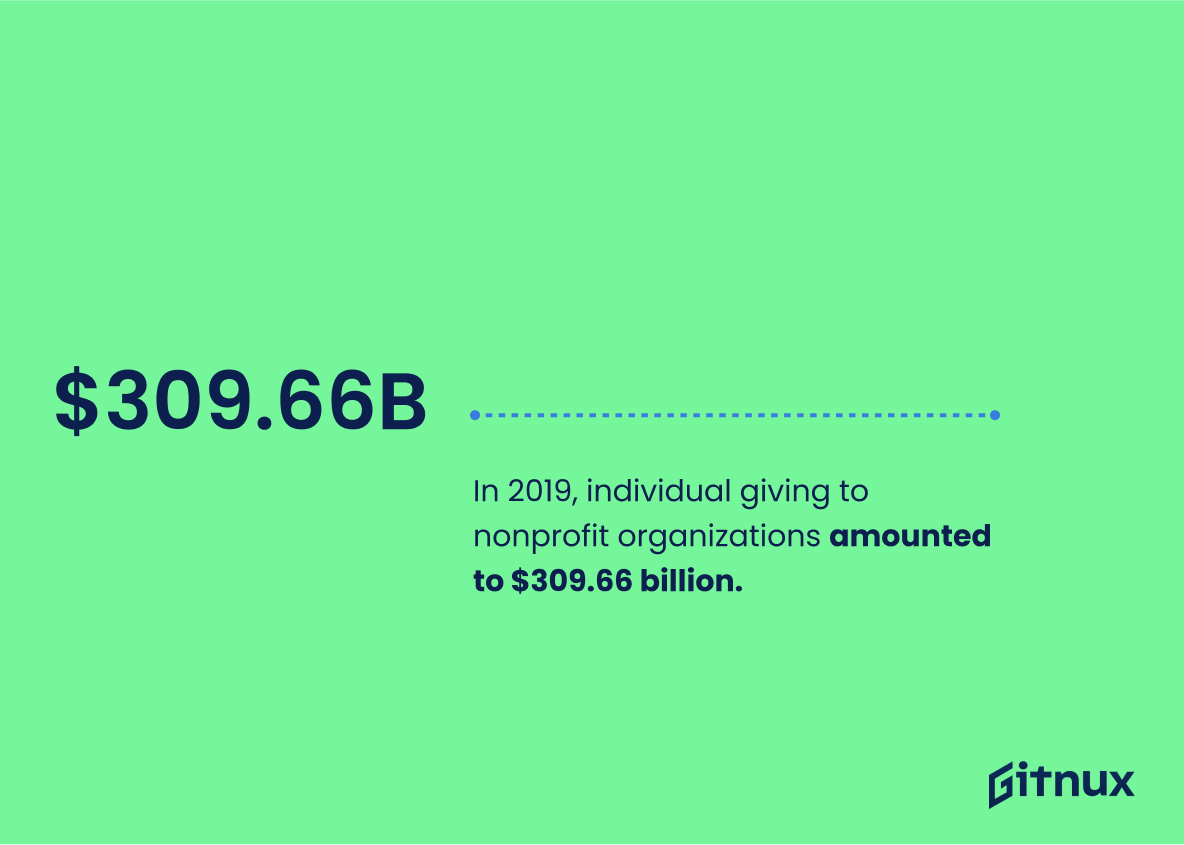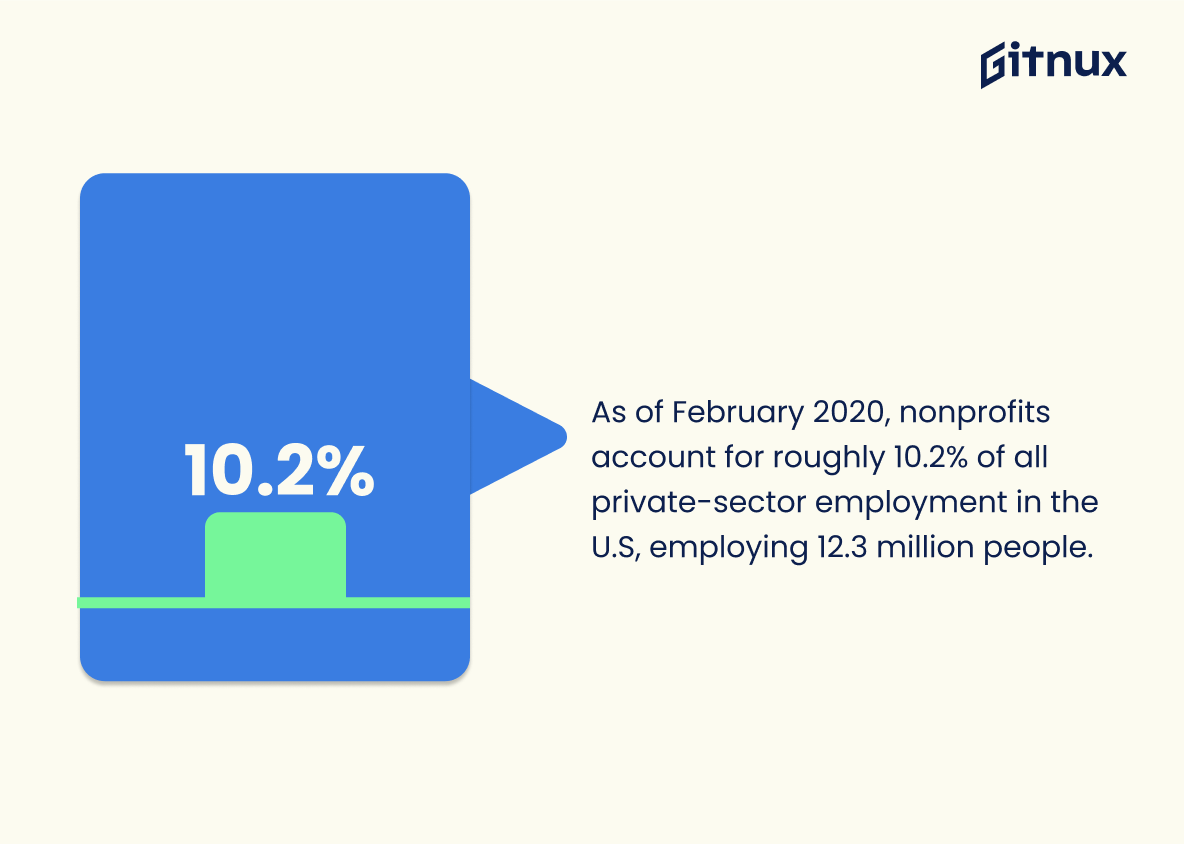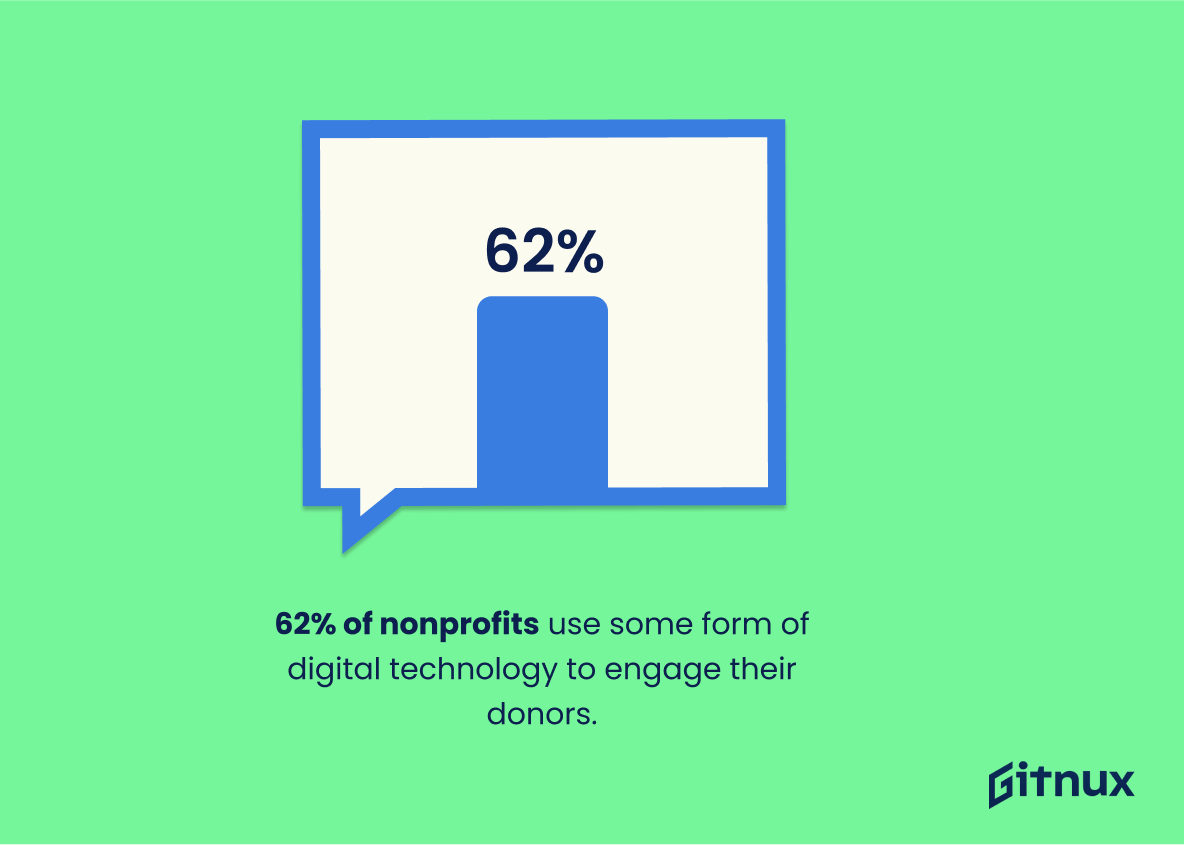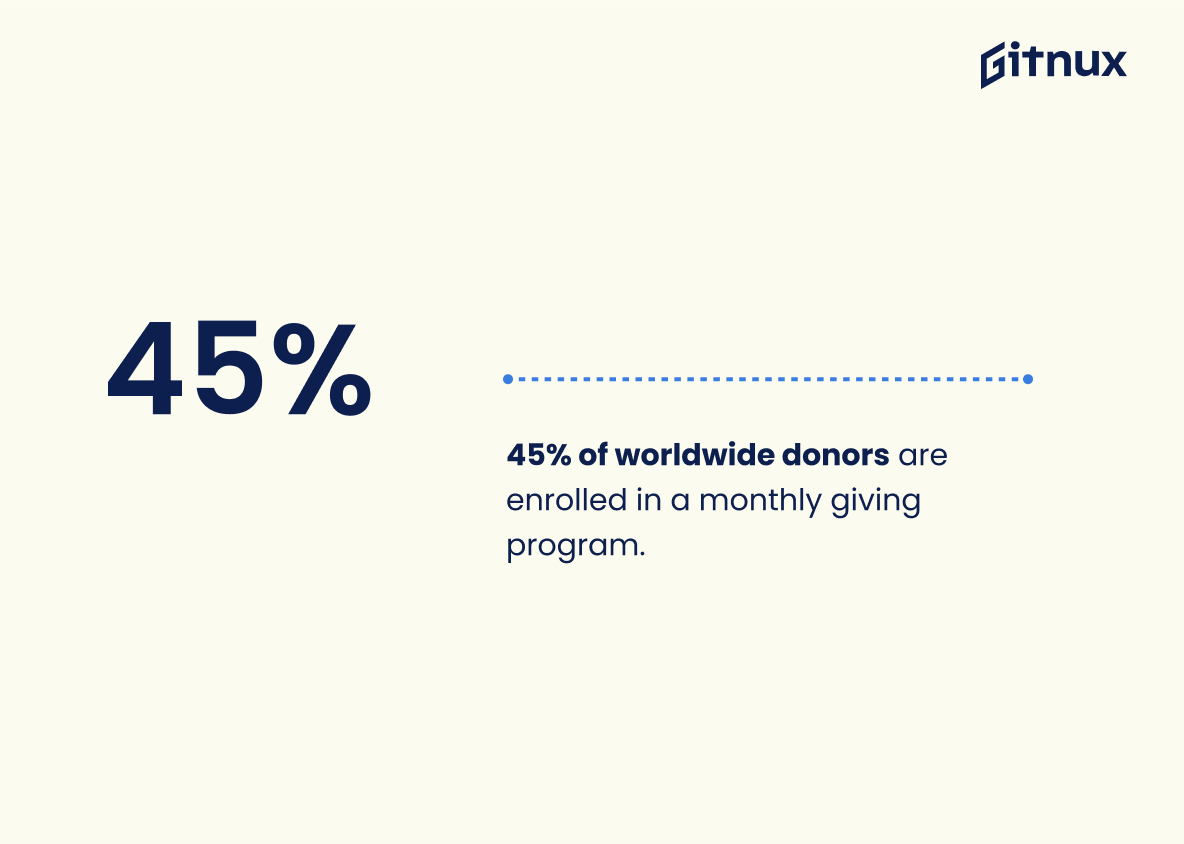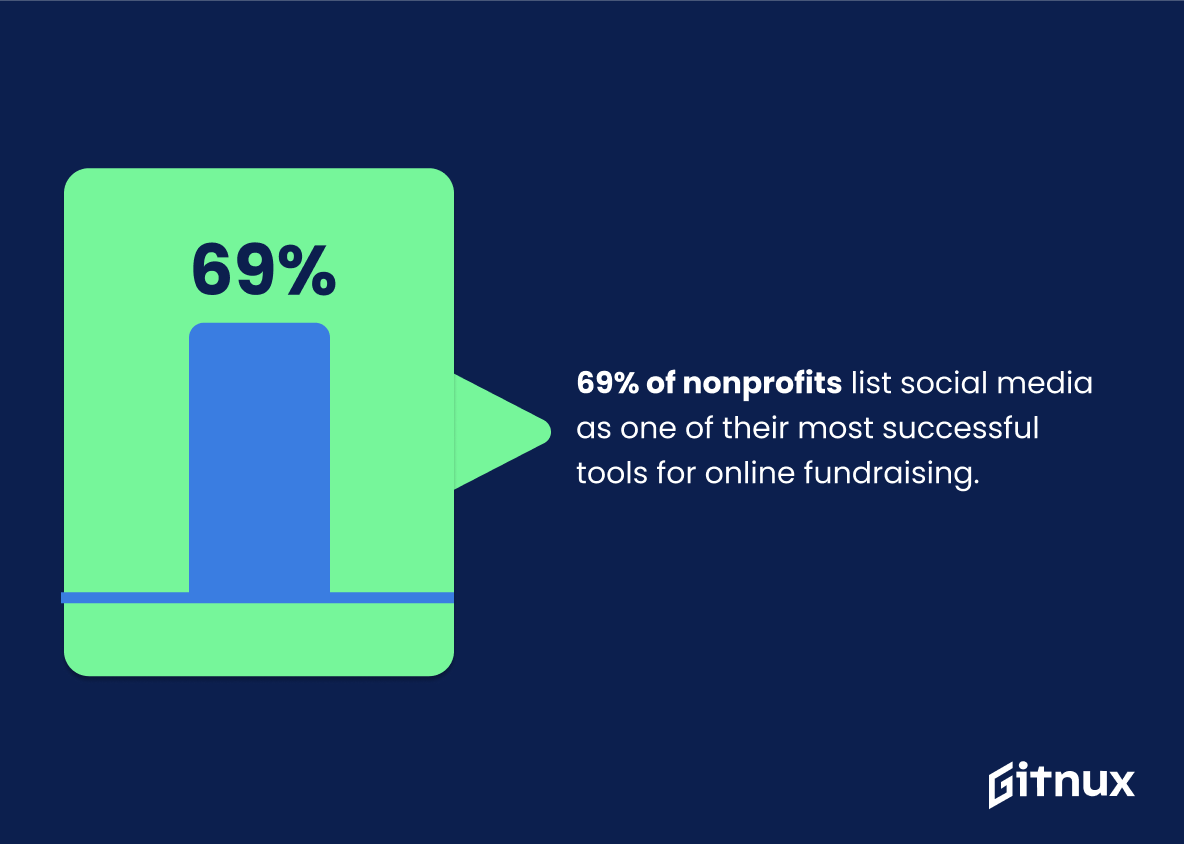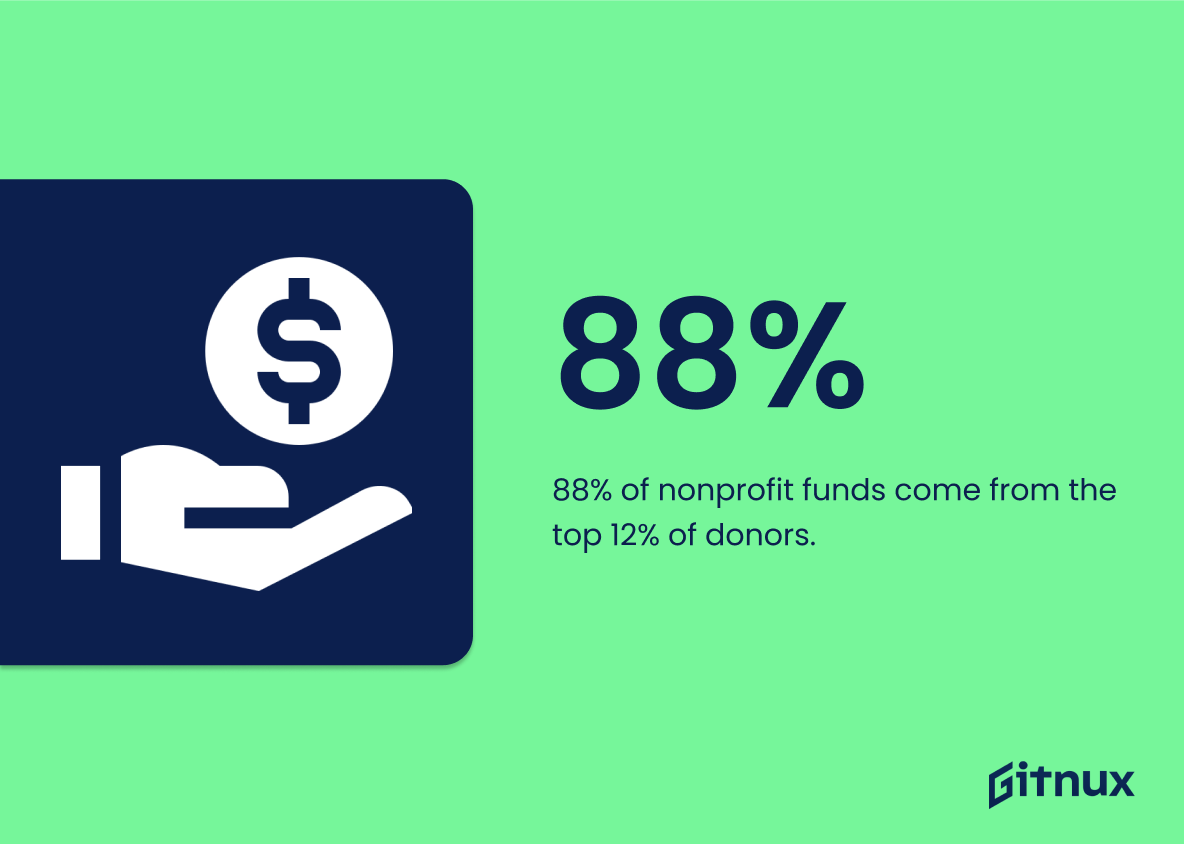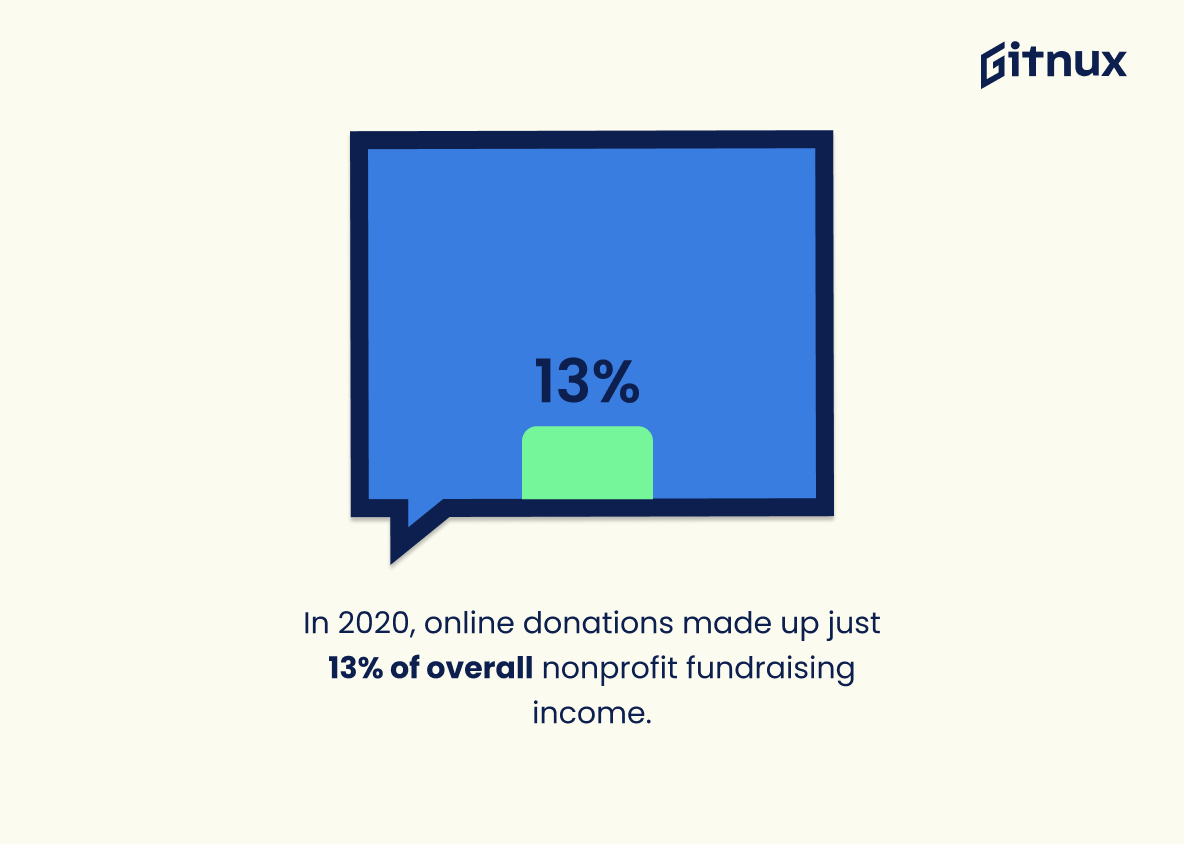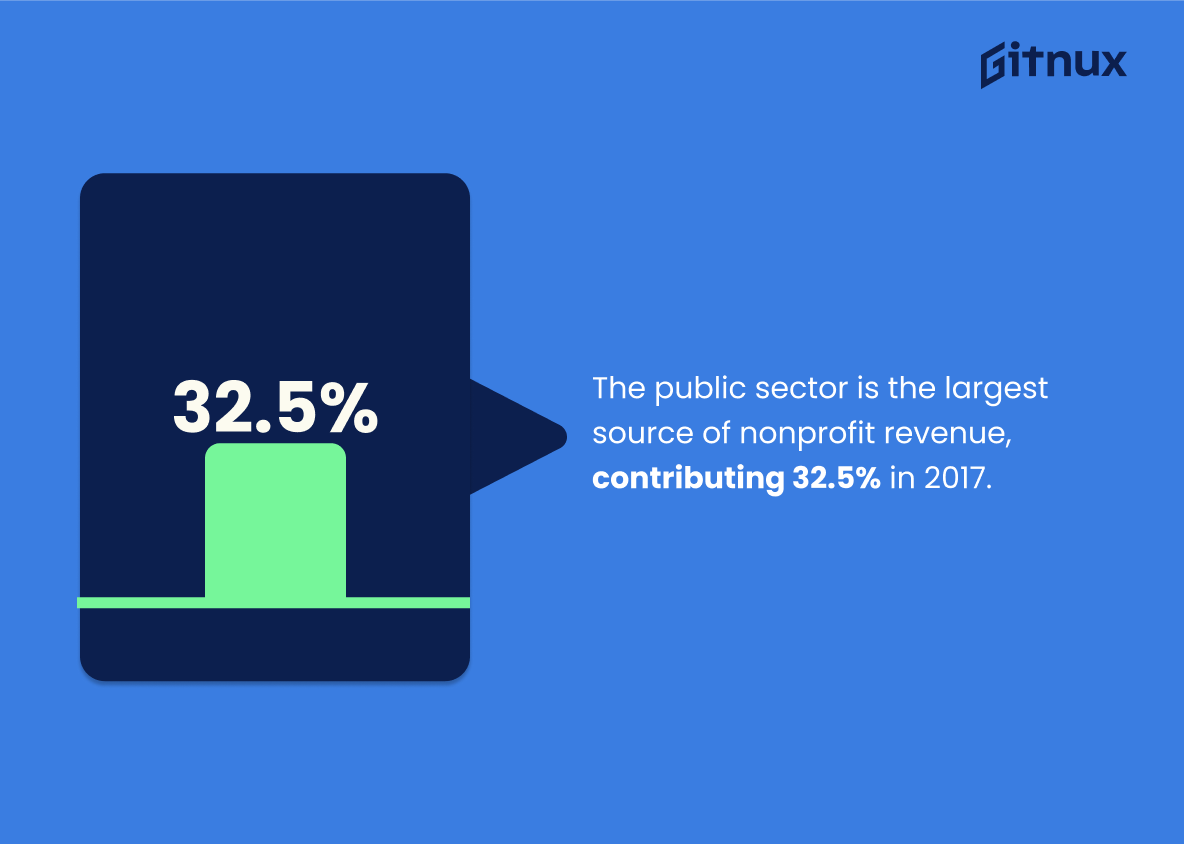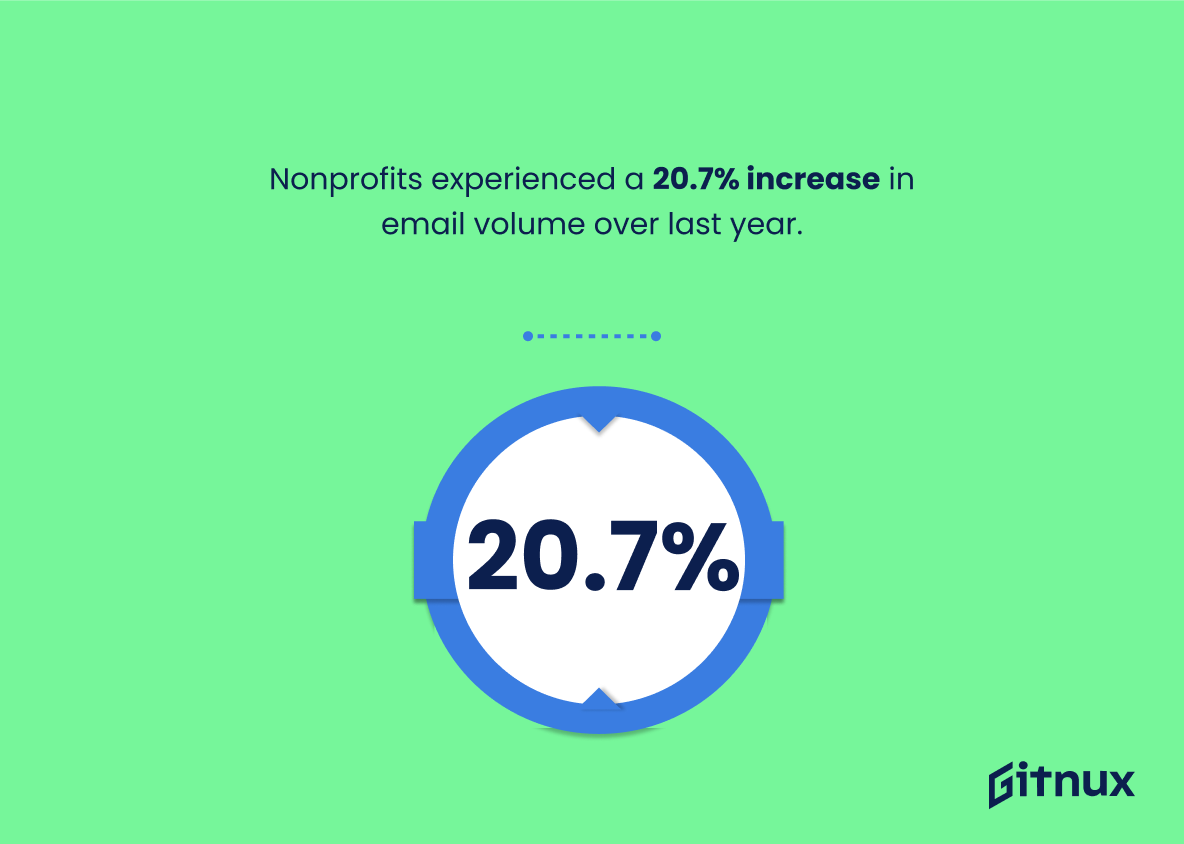In today’s society, the role of nonprofit organizations is increasingly recognized as a major player in different sectors – from promoting social causes, bringing aid to those in need, to catalyzing changes in our community. They work tirelessly, often behind the scenes, making the world a better place. But have you ever wondered about the dynamics of this sector and its actual impact? To fully understand the scope and scale of these organizations, it’s essential to dive into nonprofit statistics. These figures elucidate not only the significant role nonprofits play but also shed light on the trends, challenges, and opportunities that lie ahead. In this blog post, we will be exploring noteworthy nonprofit statistics that will surely give you a broader view of this vital sector.
The Latest Nonprofit Statistics Unveiled
Nonprofits contributed an estimated $985.4 billion to the US economy in 2015, composing 5.4% of the country’s gross domestic product.
Undeniably, the United States recognizes the critical role of the nonprofit sector, as its significant financial contribution unraveled when it injected an astounding $985.4 billion into the economy in 2015. This figure alone constitutes about 5.4% of the national gross domestic product – a testament to its financial muscle.
Casting light upon these numbers in a blog post about Nonprofit Statistics, it’s like the thread that weaves through the fabric of the nation, underlining the essentiality of nonprofits. Not only are these organizations providing needed services, advocating for called-for changes, and enriching our lives with cultural and educational experiences, they are simultaneously fuelling the economic engine of the nation.
This surprising combination of economic powerhouses that are driven by the heart, shatters a common misconception that nonprofits only consume resources. Quite the contrary, they are an integral piece of America’s fiscal framework, intertwined with its prosperity.
So when looking at this hefty $985.4 billion figure, and its 5.4% share of the gross domestic product, remember the duality nonprofits balance: charitable missions pursued with economic acumen – working to a mutually beneficial end – benefiting both the people they serve and the broader economy they are part of.
There are over 1.5 million nonprofit organizations registered in the U.S.
The sheer magnitude of over 1.5 million registered nonprofit organizations saturating the U.S. landscape punctuates the pivotal role these entities play in our society. Not only do they embody the spirit of giving back and community-focused initiatives, but they also signal significant contributions to the economy. This is a vibrant ecosystem of altruism, extending its arteries on various sectors from health, education to environmental conservation, and more. Essentially, this armor of statistics equips the reader with the sense of scale and scope, stimulating a thoughtful discourse on the impact and challenges of these nonprofit entities. The understanding of this vast network could ignite more informed conversations, strategies, and better solutions for the sector’s sustainability.
In 2019, individual giving to nonprofit organizations amounted to $309.66 billion.
By reflecting on the vast total of $309.66 billion given by individuals to nonprofit organizations in 2019, one might gain a fresh perspective on the extraordinary generosity that humankind is capable of. This astounding figure can serve as a testament to the willingness of people to allocate their hard-earned money towards causes and organizations they are passionate about. Within the context of a blog post about Nonprofit Statistics, such astronomical numbers underscore the significant role that individual contributions play in keeping the wheels of nonprofit organizations turning. Furthermore, this also hints at the recurring trust people have vested in these organizations to address some of the most pressing social, environmental, and civic issues our world is faced with.
As of February 2020, nonprofits account for roughly 10.2% of all private-sector employment in the U.S, employing 12.3 million people.
Uncovering the sheer prevalence of nonprofit organizations in the private-sector employment paints a dramatically different picture of the U.S. employment landscape, one where the influence of such organizations is both profound and far-reaching. Over one-tenth, to be more specific 10.2%, of all private-sector jobs, are nestled within this sphere, offering gainful employment to an astounding 12.3 million individuals. This significant portion strikingly underscores the integral role nonprofits play not just in society’s humanitarian fabric but also in the critical domain of job creation and income provision.
Nonprofits have seen a 34% increase in giving on #GivingTuesday since 2012.
Showcasing an impressive 34% surge in donations received by nonprofits on #GivingTuesday since 2012, this information highlights the growing power and impact of digital philanthropic trends being embraced by charitable organizations. This notable escalation not only reflects society’s increased capacity and willingness to contribute to good causes but also underlines the strategic importance for nonprofits to harness the momentum of social media-led initiatives, like #GivingTuesday, as a key component in driving their fundraising efforts.
63% of nonprofits in 2020 say their organization can only cover six or fewer months in operating reserves.
Delving deep into the world of nonprofit statistics, the revelation that in 2020, ‘63% of nonprofits could only cover six or fewer months in operating reserves’ might seem sobering. Yet, it unfurls a startling picture of the exigency many nonprofits face. This metric underscores the reality that a significant majority of these organizations operate on a financial tightrope, with a thin buffer to guard against unforeseen expenses or shortfalls in revenue. Hence, the future sustenance of such organizations can be significantly threatened by volatile economic circumstances or fluctuating donation patterns. So, really, this statistic is a clarion call, stimulating discussion around financial resilience in the nonprofit sector, and highlights the urgency for resource diversification, innovative fundraising strategies and stringent cost management.
62% of nonprofits use some form of digital technology to engage their donors.
Unveiling the increasingly digital-leaning landscape, the statistical fragment pointing to the adoption of digital technology by 62% of nonprofits provides a snapshot of the shift in donor engagement methods. The statistics invites us to delve deeper into the modern philanthropy landscape, reshaped by digital interventions. Hence, in the realm of nonprofits, this sea of change is suggestive of an evolving trend that’s gradually surfacing as the new standard. It compels nonprofits lagging in digital adoption to re-strategize their outreach modus operandi, illuminating the fact that digital footprints are not merely an accessory in donor relations but a necessity on the ground.
45% of worldwide donors are enrolled in a monthly giving program.
Delving into the realm of nonprofit statistics, we uncover an intriguing datum that peels away a layer of the philanthropic world. A compelling 45% of worldwide donors are denizens of a monthly giving program. This nugget of information is of critical importance to those in the field of nonprofit. It illuminates a powerful trend, highlighting the potential staying power and sustainability provided by a consistent influx of funds from such donors.
Not only does this increase the predictability and stability of donation flows, it also underscores the trust and loyalty that these individuals vest in these organizations. The constancy of monthly donations generates a thriving and robust environment for these organizations to function effectively. Thus, understanding the prevalence of such dedicated donors within the philanthropic ecosystem could unearth new strategic approaches for nonprofits to maximize their impact.
69% of nonprofits list social media as one of their most successful tools for online fundraising.
Within the discourse of Nonprofit Statistics, the figure that illustrates 69% of nonprofit organizations identifying social media as one of their best resources for online fundraising is a pivotal piece of information. Not only does this highlight the broad reach and pull of social networks, but it also underscores the shift in strategies pursued by these organizations. The digitization of philanthropy seems to be the new frontier, as nonprofits pivot from traditional collection methods to the more expansive, inclusive, and instantaneous cyber avenues. This single statistic reflects about the accessibility, cost-effectiveness, and broad reach of social media platforms providing organizations a remarkable tool to drum up support and raise much-needed funds. As such, the extent of a nonprofit’s exploitation of these digital channels could very well determine their fundraising prosperity and survival. It’s a directional compass for nonprofits, signaling where the future is advancing.
In 2020, the average nonprofit event attendance dropped by 39%, largely due to COVID-19 restrictions.
Drawing light upon such an insightful nugget of data as ‘In 2020, the average nonprofit event attendance dipped by 39%, mostly because of COVID-19 restrictions,’ indisputably unfolds a compelling narrative in the context of Nonprofit Statistics. It lays bare the challenge of decreased participation, which nonprofits grappled with in the teeth of the pandemic. This percentage drop probes into the wider repercussions on fundraising efforts, the delivery of critical services, and the execution of mission-driven initiatives. Moreover, it beckons the need for innovation and resilience in the non-profit sector, whilst underlining the magnified importance of virtual engagement in times of social distancing. This statistic, therefore, forms a vivid tapestry, woven with threads of cause, effect and response that the nonprofit sector exhibited amidst the pandemic.
88% of nonprofit funds come from the top 12% of donors.
The unveiling of the statistic, “88% of nonprofit funds come from the top 12% of donors,” cocoons a compelling narrative of the financial landscape within the Nonprofit sector. It paints a vivid picture of a realm heavily reliant on a slender slice of its altruistic patrons. This revelation not only lifts the veil on the disproportionate distribution of funding, but also catapults the importance of nurturing relationships with key donors into the limelight. In the vast orchestra of numbers resonating within a blog post about Nonprofit Statistics, this particular statistic resonates like a solo performance, calling the audience to not just listen, but reflect on its implications. Ensuring these top benefactors remain engaged and invested is crucial as they are the key financial drivers for many nonprofits. Revealing such a statistic is certainly not aimed at inducing alarm – rather, it underscores the significance of consciously rethinking fundraising strategies and exploring diverse avenues for income generation.
In 2020, online donations made up just 13% of overall nonprofit fundraising income.
Unearthing the reality of online donations and their contribution to overall nonprofit fundraising income emits a enlightening beam into the world of non-profit fundraising. The sliver of data highlighting that just 13% of fundraising revenue came from online platforms in 2020 serves as both a roadmap and a mirror.
Consider the snapshot it acts as a roadmap, charting the potential opportunities for growth in digital platforms. By delving deeper into this statistic, nonprofits can carve out strategies to enhance online contributions with innovative tools and technologies that could better connect with a younger audience, who typically donate online.
Yet, this statistic equally acts as a mirror, reflecting the traditional dominance of non-digital means to garner funds. The lion’s share of 87% still raised through other offline avenues underscores the continued importance of those methods. This teaches us that traditional face-to-face fundraising efforts, direct mail, and physical events remain powerful pillars of the fundraising landscape.
Therefore, the 13% statistic in 2020 is not just a number. It underscores the current realities, future possibilities, and an undeniable hybrid essence in nonprofit fundraising.
50% of the highest-grossing nonprofits use a blog for marketing purposes.
Highlighting this intriguing insight, it suggests that half of the most successful nonprofits leverage the power of blogging as a crucial part of their marketing strategy. This nugget of information demonstrates how these organizations embrace this digital medium to increase visibility, engage with their respective audiences, and cultivate relationships leading to increased revenue. In a landscape where every donation or sponsor counts, this indicator allows readers to realize the potential power of a blog for a nonprofit’s marketing plan, sparking new ideas for their strategies.
The public sector is the largest source of nonprofit revenue, contributing 32.5% in 2017.
Highlighting the fact that the public sector was the leading benefactor for nonprofit revenue in 2017, with a substantial contribution equating to 32.5%, carries significant relevance. Such a revelation in a blog post about Nonprofit Statistics amplifies the interdependence of public entities and nonprofit organizations. Not only does it underscore the reliance of nonprofits on state support, but it also catalyzes discussions on policy and decision makers to sustain and potentially increase this support. Moreover, this figure can serve as a benchmark for nonprofits in strategizing fundraising campaigns and stakeholder engagement endeavors. This is a relationship that holds the potential to shape the future financial landscape of the Nonprofit world.
Nonprofits experienced a 20.7% increase in email volume over last year.
Highlighting a 20.7% surge in email volume for nonprofits in the past year demonstrates a significant shift in their communication strategies. As the digital universe expands, nonprofits are increasingly harnessing the power of email marketing to amplify their impact, engage donors, and boost fundraising. This statistic echoes an understanding that nonprofits are evolving with technological trends and underscores the ongoing relevance of digital communication in the nonprofit sector. In essence, it paints a vibrant picture of how nonprofits are getting good at the email game and exploring innovative ways of engaging stakeholders, which is crucial to understand the current dynamics in the nonprofit landscape.
Nonprofits spend $0.25 for every $1.00 raised in direct mail fundraising.
For those engrossed in the world of nonprofits, the statistic revealing that $0.25 of every dollar raised is expended in direct mail fundraising imparts striking insight. This not only highlights the intriguing balance between investment and outcome, but it further throws light on the pragmatic operational costs that these organizations bear in order to make a tangible difference. In a blog post dedicated to elucidating nonprofit statistics, this figure would stand as a gauging parameter for researchers, donors, or even other nonprofit entities to contemplate the expenditure dynamics and fundraising efficiencies of such organizations. Delving deeper into such quantitative nuances can play a pivotal role in sparking prolific discussions on resource optimization and strategic decision-making in nonprofit management.
About 63% of nonprofits indicate that organizational budget was a barrier to technology adoption.
In the labyrinth of nonprofit statistics that shapes our understanding, the revelation that around 63% of nonprofits identify their organizational budget as a hurdle to embracing technology emerges as a guiding torch. It casts a light on the financial dilemma haunting these entities, revealing a dual challenge. Not only are they grappling with operating within budget constraints, but these limitations also impede their technological advancement. Thus, it underscores the pressing need to strike a balance between fiscal prudence and tech-enablement for sustainable growth.
This nugget of information serves as a potent reminder for policy makers, stakeholders, and donors. Their support and strategic decisions can either bridge this digital divide or widen it. Meanwhile, it pushes nonprofits themselves to innovate and find cost-effective ways to weave technology into their operations.
Nurturing a tech-forward nonprofit sector directly influences the efficiency of service delivery, modernization, and overall survivability in a digital-first world. Hence, understanding and acting upon this statistic assumes paramount importance in charting out a digitally inclusive roadmap for nonprofits.
Roughly 75% of nonprofits don’t have a paid social media marketer.
Shedding light on this numerical reality tells a tale of how nonprofit landscapes navigate resource allocation. A striking 75% of nonprofits lack a paid social media marketer in their teams, a figure that underscores the critical need for a revised approach to digital strategies. In a blog post highlighting nonprofit statistics, this figure essentially sets the stage, pivoting to the pressing issue: the struggle of the many nonprofits in harnessing the power of social media. The figures tells us a definitive story of underfunding, capacity, and aptitude gaps, calling for strategic, informed investment in social media to tap into broader engagement and awareness avenues within the nonprofit sphere.
The nonprofit sector has grown by 20% over the past ten years, a rate which is almost four times greater than the for-profit sector.
Highlighting such potent growth of the nonprofit sector underscores an intriguing shift. It not only maps out the trajectory of this sector over the past decade but also draws a vivid contrast to its for-profit counterpart. This surge illuminates a growing commitment to addressing societal issues, fueling philanthropic fervor, and encourages potential donors or volunteers to invest their time and resources where they are most impactful. Simply put, this statistic is a testament to the rising appeal, influence, and resilience of nonprofit organizations in our evolving world and is an essential data point that speaks volumes in the narrative of nonprofit statistics.
Conclusion
To sum it up, understanding nonprofit statistics is essential not just for those running such organizations, but potential donors, volunteers, and the public as well. These figures shed light on the major influence nonprofits have on society, economy, and the lives of individuals they serve. From the rate of their growth, to the revenue and employment they generate, and the diversity and reach of their causes, nonprofit statistics provide an invaluable insight on the sector’s strengths and challenges. As we move forward, it’s crucial that we make the most out of these data not just to guide our operational and fundraising strategies, but to ensure that we continue making a positive and lasting impact on the communities we serve.
References
0. – https://www.www.bls.gov
1. – https://www.www.philanthropyroundtable.org
2. – https://www.www.newbreedrevenue.com
3. – https://www.doublethedonation.com
4. – https://www.techreport.ngo
5. – https://www.blog.hubspot.com
6. – https://www.nonprofitssource.com
7. – https://www.givingtuesday.org
8. – https://www.www.causevox.com
9. – https://www.www.podium.com
10. – https://www.www.networkforgood.com
11. – https://www.www.statusbrew.com
12. – https://www.www.grantthornton.com
13. – https://www.www.urban.org
14. – https://www.neonone.com
15. – https://www.www.classy.org
16. – https://www.learn.guidestar.org
